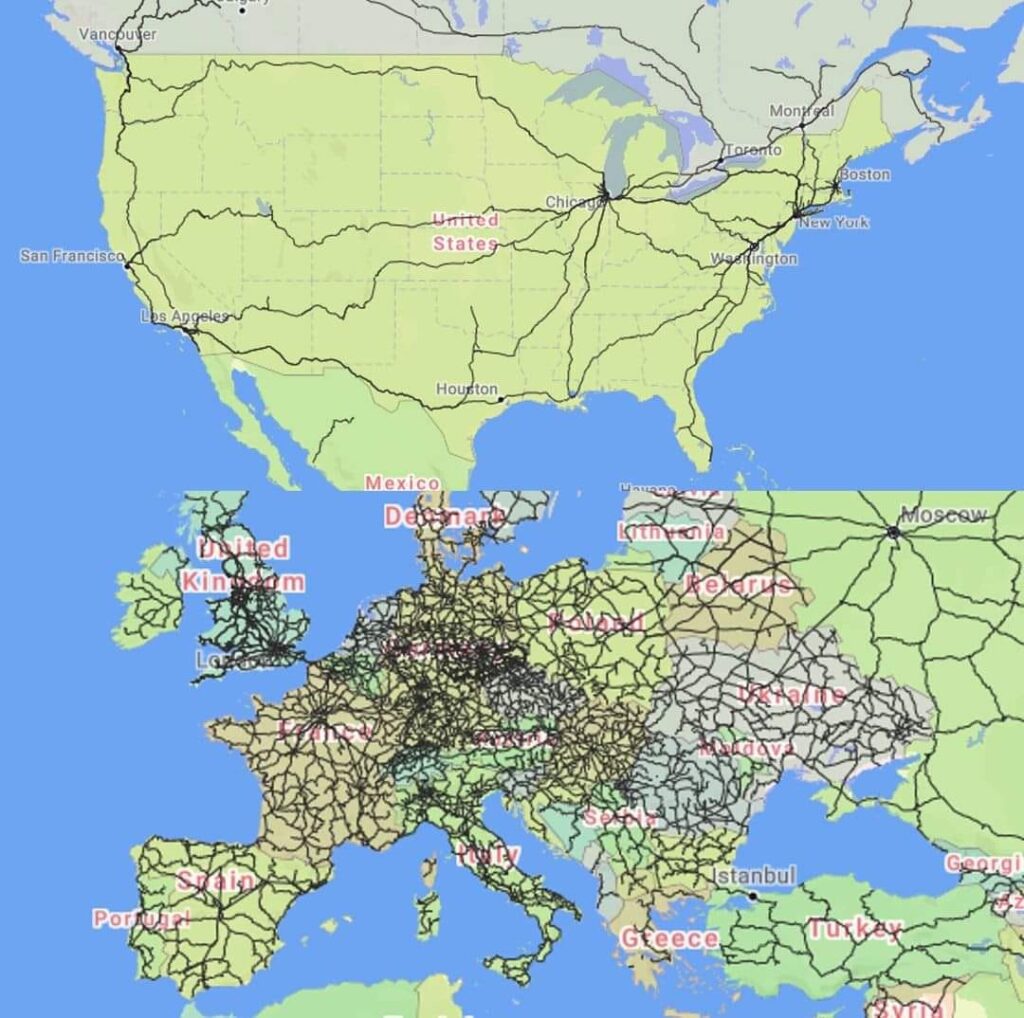
A Facebook page titled The sound of Train recently posted an image comparing passenger train lines in the United States and Europe (archived link). The post quickly gained traction with 117,000 reactions, 21,800 comments, and 44,000 reshares, highlighting the public’s interest in transportation infrastructure.
The image, which later went viral on Reddit in 2023, sparked discussions about the stark differences between the two continents’ railway networks. One Reddit user humorously remarked, “In Germany, trains are used even for [sic] go from bathroom to kitchen.”
The maps depicted in the post provide a visual representation of the contrasting scales of passenger train systems in the US and Europe. While the European map accurately reflects the comprehensive network of passenger train lines across the continent, the US map primarily showcases Amtrak’s long-distance routes, omitting many regional and commuter lines. This discrepancy slightly skews the comparison, suggesting a more significant disparity than reality.
Historically, the US passenger train system has faced challenges, especially since the mid-20th century. Decades of neglect and the rise of alternative transportation modes like automobiles and airplanes have contributed to its underdevelopment compared to Europe. In contrast, European countries have continually invested in expanding their rail networks, connecting major cities with high-speed trains like the French TGV, Spanish AVE, and the Eurostar linking London, Paris, Brussels, and Amsterdam.
Even within the US, regional disparities are evident. The Northeast corridor, with networks like the Long Island Rail Road and Metro-North, sees substantial ridership, contrasting with less developed networks in the West.
The decline of US passenger trains began notably in 1929 with the Great Depression and subsequent economic shifts favoring private automobiles. However, recent initiatives, including President Joe Biden’s 2023 plan to bolster train infrastructure, signal a renewed interest in expanding and modernizing the network.

In Europe, despite the rise of low-cost airlines challenging rail travel’s cost competitiveness, policymakers are actively promoting train travel as a sustainable alternative. Efforts are underway to enhance affordability and efficiency to attract more passengers.
In conclusion, while the viral maps provide a snapshot of the disparities between US and European passenger train networks, the story behind these differences is nuanced. Historical trends, economic factors, and policy decisions have all shaped the current state of affairs. Looking forward, continued investment and innovation will be crucial for the US to catch up with Europe and meet evolving transportation needs sustainably.



Leave a Reply